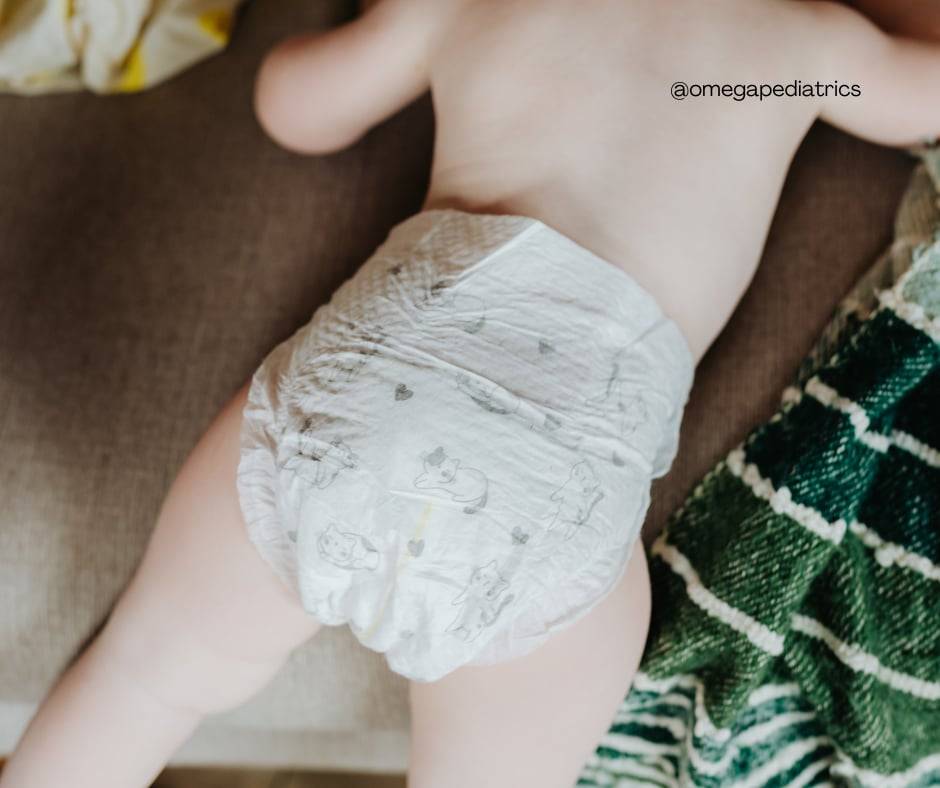Welcoming a newborn into your life is an exciting and joyous experience, but it also comes with challenges, especially in sleep. For many new parents, one of the most common concerns is how to help their newborn baby sleep through the night.
Newborns have unique sleep patterns that lead to frequent wake-ups, leaving parents exhausted and searching for solutions. Fortunately, with the right approach and patience, you can help your baby develop healthy sleep habits that benefit the entire family. This blog post explores proven tips to help your newborn sleep through the night.
Understanding Newborn Baby Sleep: The Basics
Before diving into specific tips, it’s important to understand how newborn baby sleep works. Unlike adults, who have sleep cycles lasting around 90 minutes, newborns have much shorter sleep cycles, ranging from 45 to 60 minutes. During these cycles, they transition between active sleep (REM sleep) and quiet sleep (non-REM sleep).
In active sleep, your baby may move, make noises, or appear to be awake, while in quiet sleep, they’re more still and restful. Another key difference between newborn and adult sleep is that newborns don’t have a fully developed circadian rhythm—the internal body clock that helps regulate sleep-wake cycles.
Newborns don’t naturally differentiate between day and night, leading to irregular sleep patterns that are challenging for parents. Understanding these differences is crucial as you work to establish healthy sleep habits for your baby.
Interested more on newborn baby sleep? This article is for you: Why Newborn Baby Smile While Sleeping: Expert Insights and Explanations
1. Establish a Consistent Bedtime Routine
This is one of the most effective ways to help your newborn sleep through the night. Babies, like adults, thrive on routine. A bedtime routine signals your baby that it’s time to wind down and prepare for sleep. Over time, this routine will be a comforting and predictable part of their day, making it easier for them to transition into sleep.
Creating a Bedtime Routine That Works
A successful bedtime routine doesn’t have to be complicated, but it should be consistent. Here are some steps to create a routine that works for you and your baby. Over time, your baby will associate the bedtime routine with sleep, making it easier for them to settle down and sleep for longer stretches during the night.
- Start with a Relaxing Bath: A warm bath is soothing to signal the start of the bedtime routine. The warmth of the water helps relax your baby’s muscles and the familiar sensation of water is comforting.
- Lower the Lighting: Dim the lights in your baby’s room to create a calm environment conducive to sleep. This helps your baby’s body produce melatonin, the hormone that promotes sleep.
- Engage in Quiet Activities: After the bath, do quiet activities like reading a short story, singing a lullaby, or gently rocking your baby. These activities help further relax your baby and prepare them for sleep.
- Consistent Timing: Start the bedtime routine at the same time each evening. Babies thrive on consistency, and sticking to a set time helps regulate their internal clock.
2. Keep Nighttime Feedings Calm and Quiet
Nighttime feedings are an inevitable part of life with a newborn. However, how you approach these feedings impacts your baby’s ability to go back to sleep afterward. The key is to keep nighttime feedings as calm and quiet as possible to avoid overstimulating your baby.
Tips for a Peaceful Nighttime Feeding Experience
- Use Soft, Dim Lighting: When you need to feed your baby at night, use a nightlight or a dim lamp rather than turning on bright lights. This keeps your baby sleepy and makes it easier for them to fall asleep after feeding.
- Minimize Interaction: Keep interactions low during nighttime feedings, even though you’re tempted to talk to and play with your baby. Focus on feeding and comforting your baby without engaging in stimulating activities.
- Keep Swaddling in Mind: If your baby is still in the swaddling stage, consider swaddling them before the feeding begins. Swaddling helps your baby feel secure and reduces the startle reflex that wakes them up fully.
Maintain a calm and quiet environment during nighttime feedings to let your baby understand that nighttime is for sleeping, not for playing or interacting. This, in turn, encourages longer stretches of uninterrupted sleep.
3. Encourage Daytime Feedings
A well-fed baby during the day is more likely to sleep better at night. One of the reasons newborns wake up frequently during the night is because they’re hungry. By ensuring your baby gets enough to eat during the day, you help reduce the number of nighttime awakenings.
Strategies for Successful Daytime Feedings
- Regular Feeding Schedule: Aim to feed your baby every 2 to 3 hours during the day. This ensures they get enough calories and nutrients to stay content through the night.
- Cluster Feeding in the Evening: Some babies naturally want to eat more frequently in the late afternoon and evening—a practice known as cluster feeding. Allowing your baby to cluster feed can help them stock up on calories before bed, potentially leading to longer sleep.
- Pay Attention to Hunger Cues: Watch for signs that your baby is hungry, such as rooting (turning their head toward something to suck on), sucking on their hands, or becoming fussy. Responding to these cues promptly helps ensure your baby is well-fed and content.
By encouraging frequent day feedings, you help your baby feel fuller and more satisfied at night, leading to better sleep for both of you.
4. Create a Sleep-Inducing Environment
The environment in which your baby sleeps plays a critical role in their ability to sleep soundly. A sleep-inducing environment is quiet, dark, and comfortable. Creating such an environment helps your baby feel secure and ready for sleep, leading to longer and more restful periods of sleep.
How to Create the Perfect Sleep Environment
- Temperature Control: Babies sleep best in a cool room, typically between 68-72°F (20-22°C). Overheating causes discomfort and interrupts sleep, so keep the room at a comfortable temperature.
- White Noise Machines: This device helps create a soothing auditory environment. The steady sound of white noise mimics the sounds your baby hears in the womb and helps block out other household noises that might disturb their sleep.
- Darkness is Key: Darkness signals to your baby’s brain that it’s time to sleep. Use blackout curtains to keep the room dark, especially during daytime naps or early morning sleep.
- Safe and Comfortable Bedding: Ensure the baby’s crib is outfitted with a firm mattress and fitted sheet. Avoid loose blankets, pillows, or toys in the crib, as these can pose a suffocation risk.
By making small adjustments to your baby’s sleep environment, you create a space that promotes relaxation and sleep, helping your baby sleep through the night more consistently.
5. Practice Safe Sleep
Safety is paramount when it comes to your baby’s sleep. Following safe sleep practices protects your baby and contributes to more restful sleep for your baby and you. The American Academy of Pediatrics (AAP) has established guidelines for safe sleep that all parents should follow.
Key Safe Sleep Guidelines to Follow
- Back to Sleep: Always place your baby on their back to sleep, whether for a nap or night sleep. This position reduces the risk of Sudden Infant Death Syndrome (SIDS).
- Use a Firm Sleep Surface: Your baby’s crib, bassinet, or play yard should have a firm mattress covered by a fitted sheet. Soft surfaces, such as couches or adult beds, increase the risk of suffocation and should be avoided.
- Room-Sharing Without Bed-Sharing: The AAP recommends that babies sleep in the same room as their parents, but not in the same bed. Room-sharing allows you to keep an eye on your baby and makes nighttime feedings more convenient, while bed-sharing is dangerous due to the risk of suffocation or injury.
- Avoid Overheating: Dress your baby in appropriate sleep clothing, such as a onesie or sleep sack, and keep the room temperature. Overbundling or using too many blankets leads to overheating, which is a risk factor for SIDS.
Adhering to safe sleep practices creates a secure environment that supports healthy sleep and gives you peace of mind, knowing your baby is safe as they sleep.
6. Recognize and Respond to Newborn Baby Sleep Cues
Babies give subtle signals when tired. Recognizing these sleep cues matters for how easily your baby falls asleep. If you catch your baby’s sleep cues early and respond promptly, you help them settle down before they become overtired. An overtired baby is difficult to soothe and may resist sleep.
Common Sleep Cues and How to Respond
- Yawning: A clear sign that your baby is getting tired and ready for sleep. If you notice your baby yawning, start the bedtime or naptime routine.
- Rubbing Eyes or Ears: When babies are tired, they often rub their eyes or ears. This is another cue that it’s time to wind down and get ready for sleep.
- Staring Off or Glazed Eyes: If your baby starts staring off into space or their eyes look glazed, they might be sleepy. This is a good time to move to a quiet environment and begin soothing them.
- Decreased Activity: If your baby’s movements start to slow down or they seem less interested in play, it could be a sign that they’re ready for a nap or bedtime.
Learn to recognize these sleep cues and respond promptly to help your baby fall asleep more easily and avoid the stress of trying to soothe an overtired baby.
7. Patience and Consistency: The Keys to Success
Helping your newborn develop healthy sleep habits is a process that requires patience and consistency. Every baby is different, and what works for one may not work for another. It takes time for newborns to develop the ability to sleep through the night consistently.
As a parent, provide a supportive environment and gentle guidance as your baby learns to sleep independently. Maintain patience and consistency to allow your baby to develop healthy sleep habits that will benefit them for years. This process takes time, but the rewards are worth the effort.
How to Stay Patient and Consistent
- Track Sleep Patterns: Keeping a sleep journal is incredibly helpful. By tracking your baby’s sleep patterns, you identify trends, such as when they are most likely to fall asleep or wake up. This information helps you adjust your routine to suit your baby’s natural rhythms.
- Adjust as Needed: While consistency is key, it’s also important to be flexible and willing to adjust your approach. If one strategy isn’t working, don’t be afraid to try something different. Sometimes small changes make a difference in your baby’s sleep patterns.
- Celebrate Progress: Sleep training can be challenging, but it’s important to celebrate the small victories along the way. Whether it’s an extra hour of sleep or a successful nap, acknowledge these achievements to keep you motivated and positive.
- Seek Support When Needed: If you’re struggling with your baby’s sleep or feeling overwhelmed, don’t hesitate to reach out for support. Pediatricians, sleep consultants, and other parents provide valuable advice and reassurance.
Check out this article for a related topic: 6 Reasons Why Sleep is Important for New Mothers: A Guide to Postpartum Rest
Achieve Better Sleep for Your Newborn and You
Helping your newborn baby sleep through the night is one of the most rewarding challenges you’ll face as a new parent. While the process can be demanding, the strategies outlined in this post provide a roadmap to success. You’re setting the stage for better sleep for your baby—and yourself.
Understanding your baby’s unique sleep needs and responding to cues impacts how easily they settle at night. And while it’s essential to be patient and consistent, it’s equally important to be flexible and adjust your approach. Every baby is different, and finding the right strategies may take some time.
Better sleep for your newborn means better sleep for the whole family. With the tips presented, you’re well on your way to helping your baby develop lifelong, healthy sleep habits. As you navigate the early months of parenthood, you’re not alone—many resources, including Omegapediatrics.com, are here to support you on this journey.








